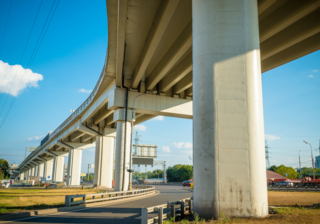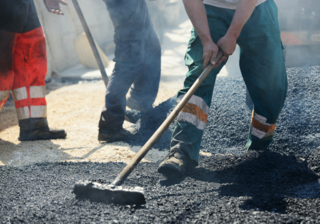Transportation infrastructure funding is urgent; but funding for public health infrastructure to address addiction is critical.

While our nation’s transportation infrastructure is in need of repair, upgrade, and expansion, deaths from transportation related accidents continue to be dwarfed by addiction and drug overdose.
Sound roads and bridges are one key facet of American safety and well-being, but 2016 drug overdoses reached over 63,000 — more than all road deaths and gun-related deaths combined. This is not to mention approximately another 100,000 Americans who die each year from alcohol addiction and related illnesses.
If as a country, we truly cared about the safety and well-being of all Americans, we would dedicate substantial resources not only to our transportation infrastructure, but our country’s public health infrastructure for addiction as well.
While declaring a “public health emergency,” President Trump fell short of designating the issue a public health crisis. As upkeep and expansion of our nation’s infrastructure necessitates our collective action and resources, so too does our addiction treatment and recovery pathways. Just as roads and bridges transport us from one location to another, a strong public health infrastructure serves as the “roads” and “bridges” to transport those suffering from active addiction to a place of safety and recovery.
Building Roads to Recovery

There are many different roads that lead to recovery. One pathway still in need of development is pharmacology, or medications for substance use disorder. Established access to medications such as buprenorphine/naloxone (commonly known as Suboxone) and the overdose reversal medication, naloxone (Narcan) can help get individuals on the road to recovery. Thankfully, this is starting to happen. But we need much more – fast. Excellent, updated, clinical guidelines for the treatment of opioid use disorder now exist and need to be followed.
Secure Bridges to Safety
We have tended to treat addiction like a burning building. We have poured resources into extinguishing the fire—we’ve become experts at helping people initially stop their drug use with “more beds” and 28-day “rehab” stints. Yet, we know that initially stopping substance use is actually the easier part; staying stopped is the critical challenge. We’re far less accomplished in preventing the fire from restarting—at preventing relapse.
To further prevent relapse across the various types of substance use disorders, we need to connect short-term acute care treatment (e.g. 28-day rehab stints) with long-term, ongoing recovery supports for substance use disorder in our communities that have shown to be effective and cost-effective in facilitating long-term remission. This means investing in recovery resources across America, from recovery residences to recovery community centers.
Resources to Rebuild Lives
Individuals need resources that support remission and help individuals start to gain traction and reconstruct their lives. Collectively, we’ve done a poor job of providing the needed architectural planning and rebuilding materials -the social, physical, human, and cultural resources known as recovery capital. Resources can often take the form of education and job training, and serve as the foundation to rebuilding a gutted life once the initial fire of addiction is out.
Remove Barriers and Tolls
Barriers of stigmatization and the continual tolls of criminalization have blocked many in addiction recovery from receiving the “rebuilding permits” needed to allow the recovery process to begin. If someone has a criminal record, for example—often directly related to their substance use—they are barred from getting a job, housing, a loan for school, or from even opening a bank account. It is a heavy toll to pay, and such barriers serve only to increase hopelessness, increase relapse risk, and stymie long-term remission and recovery efforts.
As death rates continue to rise, local jurisdictions across America scramble to try to find funding for treatment and recovery support services. Desperate family members struggle to locate health care services for their loved ones. This is truly an All-American Problem.

Like crosses on the side of the highway, more than one thousand newly bereaved families are added to the list of casualties each and every week.
These deaths are completely preventable.
Transportation infrastructure? Yes, it is needed; but public health infrastructure for addiction needs are a national crisis. We need to invest in more than asphalt, we need to invest in American lives. Can we please get to work?
John F. Kelly and Alexandra Plante, Recovery Research Institute, Massachusetts General Hospital and Harvard Medical School


